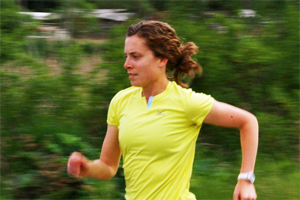 By: Nikki Reiter
By: Nikki Reiter
What if you could improve your running performance and reduce the likelihood of injuries at the same time? Seeing as how most runners will encounter an injury this year, chances are you’re apprehensive about this opening claim. So how is it achieved? It’s all in your technique. Coaches and researchers have been debating and implementing the idea correcting running gait (i.e. the way your run) for these purposes for years.
But Doesn’t Your Body Choose How to Run?
You may have heard that a runner’s body selects their most economical way of running, and that ‘you cannot change the way you run.’ Although it’s been found that runners will run using the technique that expends the least amount of energy, it’s not necessarily the right technique that will allow you to increase your mileage and take your running to the next level. Certainly, making changes to your stride initially requires concentration and commitment to change and initially the change makes your ‘new’ form less efficient, especially when you’ve been running this way for years. However, the long-term benefits are likely to outweigh the short-term challenges required for adjustment.
How Do You Make the Change?
Making permanent changes to the way you perform any physical skill requires practice. Perfect practice. Michael Jordan didn’t hit his first free throw, but learned how to execute the skill consistently after practicing it perfectly. Gait can also be performed perfectly (for your body – everyone will run slightly differently), yet most of us run with poor mechanics. Gait retraining involves changing the way you run and changes can be seen in as little as one session. Researchers have found that successful changes to gait with simple feedback to runners, such as ‘run lightly,’ can reduce loading rates and tibial accelerations, both variables associated with the shock of impact and are thought to be related to stress fractures in runners.
Gait retraining can certainly improve speed and performance, however the approach must respect the training capacity of the body to perform the new skill. Injury often occurs when training strategies are not realistic for the runner’s current state of fitness. This varies highly between people. The runner must respect training load and start with one change at a time, and not try to replicate their current mileage with a new style of running.
Try This at Home
The optimal approach would be to hire a technical running coach or a biomechanist who specializes in running to watch you run and make recommendations for what can be done to improve your mechanics. Alternatively, you can ask if a physiotherapist can point out some of your weaknesses (particularly hips/core) and ask them how this would affect your running. Then, hop on a treadmill at the gym and watch your running style in the mirror, or get someone to videotape you running. See if you can address what the physiotherapist told you now that you have this visual feedback.
Attempting gait retraining is a risk, as adopting new mechanics is accompanied by a decreased tolerance for workload and likely a decrease in fitness due to reduced training capacity. Be careful and be persistent. Change can only happen if you’re open to it.
***

Nikki Reiter is a Mizuno Running Brand Ambassador from Kelowna, BC. She holds a master’s degree in biomechanics, coaches Cross Country at UBC Okanagan and is the founder of Run Right Gait Analysis Service (run-right.ca).





 Current Issue
Current Issue Previous Issue
Previous Issue Prior Release
Prior Release
